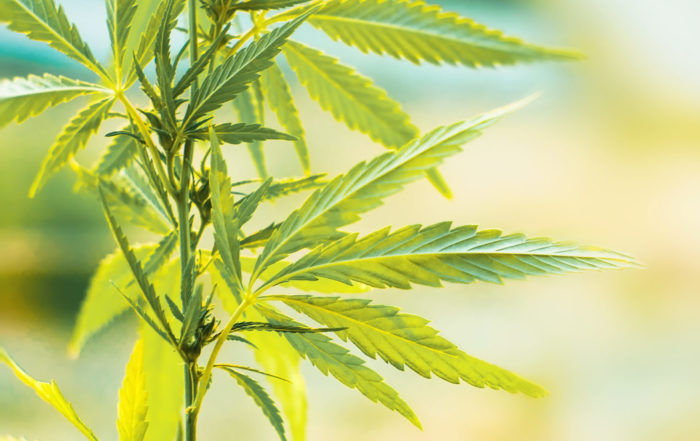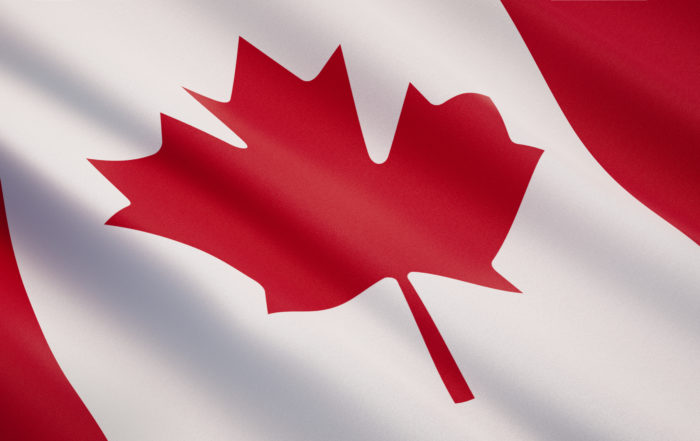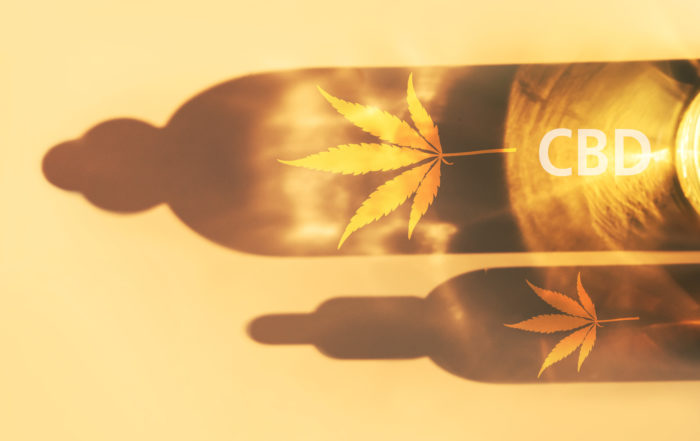
Sourcing Cannabis Lawfully for CBD Consumer Products: Challenges and Opportunities
By Suzie Trigg, Steve Armstrong, and Joanna Pearce
The decriminalization of industrial hemp (“hemp”) under the Agriculture Improvement Act of 2018 (the “2018 Farm Bill”)[1] and the liberalization of related state laws stirred an intense interest in the use of cannabidiol (“CBD”) in consumer products, medicines, and commercial applications. CBD is just one of over 100 chemical compounds—known as “cannabinoids”—that are found in Cannabis sativa L. Unlike another well-known cannabinoid, delta-9-tetrahydrocannabinol (“∆-9 THC” or “THC”), CBD does not cause the “high” commonly associated with marijuana. CBD is purported to have a variety of benefits, and CBD compounds are, in fact, already being used in a diverse range of products, including foods, cosmetics, and dietary supplements, to name but a few. While CBD has potential therapeutic properties, FDA has, so far, limited its approval of CBD to a single prescription treatment for epilepsy. FDA has repeatedly called for information to help it consider the safety of CBD in the other products under its jurisdiction.[2] For companies seeking to market CBD products to consumers, regardless of the specific FDA regulatory classification, obtaining a continuing source of quality, lawful cannabis materials for research, development, and subsequent distribution is nothing short of essential.
Sourcing the materials to produce CBD products requires informed diligence. Hemp, the source of CBD in consumer products, must be cultivated, sampled, tested, and ultimately harvested under carefully managed, well-regulated plans approved by USDA or state or Tribal regulators. Marijuana remains an illegal Schedule I drug under the federal Controlled Substances Act (the “CSA”), and its production for medical research purposes remains subject to strict federal controls that, to date, have limited the supply of available research-grade cannabis to that produced by a single, registered grower.[3] Under the current framework, securing lawful cannabis, i.e., “hemp” and its higher-∆-9 THC sibling, marijuana, for testing and research is a painstaking process.[4] Companies seeking to convert hemp into consumer products or to research new medical uses of cannabis will need to rely on skilled growers and knowledgeable distributors to secure a continuing source of supply without veering into unlawful territory. In addition, such companies should carefully document their sources of supply and obtain contractual commitments regarding the lawfulness of their sources of supply.
Cultivation Controls
The 2018 Farm Bill legalized hemp, removing it from Schedule I of the CSA and setting up a national program of USDA-supervised cultivation.[5] The 2018 Farm Bill defined “hemp” as any part of the plant species Cannabis sativa L. with a ∆-9 THC concentration of not more than 0.3% on a dry weight basis.[6] Cannabis plants with ∆-9 THC concentrations higher than the 0.3% threshold are still considered marijuana under federal law, and those who seek to produce such material for medical research must register with the Drug Enforcement Administration (“DEA”) and comply with strict handling, recordkeeping, and security requirements.[7]
The 2018 Farm Bill allowed domestic hemp cultivation to expand well beyond the pilot research programs sanctioned under the 2014 Farm Bill.[8] As a result, a nationwide network of regulated hemp production has emerged. The 2018 Farm Bill authorized the states and federally recognized Tribes to establish plans for regulating hemp production and empowered USDA to exercise direct oversight in regions not covered by a state or Tribal plan.[9] All state and Tribal plans and individual growers must comply with USDA’s regulations for hemp production, which were published for comment as an Interim Final Rule in October 2019 (the “Interim Final Rule”) and issued as a Final Rule in January (the “Final Rule”).[10]
The Final Rule sets out the parameters of lawful hemp production, whether it is conducted pursuant to a state or Tribal regulatory plan or under the direct supervision of USDA. The basic requirements include procedures for: (1) qualifying and licensing producers; (2) reporting on land under cultivation; (3) inspection and sampling; (4) testing crops for ∆-9 THC concentration; (5) disposing of “hot hemp” that exceeds the permissible ∆-9 THC threshold; and (6) punishing violations.[11] Any person with a felony conviction related to a controlled substance is not allowed to produce hemp under a state, Tribal, or USDA production plan for ten years from the date of conviction.[12]
DEA, for its part, has issued an Interim Final Rule to implement the 2018 Farm Bill and its exemption of “hemp” from the CSA.[13] DEA’s proposed rule alarmed hemp processors by holding that any derivatives or extracts of the hemp plant could still be regulated as controlled substances if they exceeded the 0.3% ∆-9 THC limit. The Hemp Industries Association complained that the rule would hamstring production, since in-process hemp ingredients, such as concentrated extracts destined for future dilution, could be deemed controlled substances during production and subject the processor to prosecution even if the finished hemp product contained permissible levels of ∆-9 THC. The Hemp Industries Association is seeking judicial review to modify or set aside the rule.[14]
Heavy Lifting with Hemp
Companies that simply want a reliable source of lawful hemp for product development or distribution may encounter more than a few obstacles. Even though a national cultivation standard is now in place, growers and shippers must also pay close attention to state and Tribal requirements. USDA allows state and Tribal plans the freedom to establish reliable, “performance-based” criteria that can permit reduced sampling of crops that have shown a good track record of compliance with the 0.3% limit on ∆-9 THC concentration.[18] However, during the rulemaking process, USDA also noted that nothing would preempt or limit any state or Tribal plan from setting stricter standards for compliance, so long as the plan meets USDA’s standards.[19] Moreover, not all states permit hemp cultivation under a hemp program. For example, Idaho does not permit the production of hemp with ∆-9 THC, even though federal law permits up to 0.3%.[20] New York and many other states continue to limit hemp production to pilot research programs licensed under the 2014 Farm Bill.[21]
For companies looking to source hemp, it is critical to find knowledgeable growers who are licensed by USDA or state or Tribal authorities and who have detailed strategies for growing and delivering a compliant crop. Indeed, the kind of due diligence that a company must use to select a supplier of food or drug ingredients under the applicable provisions of the Federal Food, Drug, and Cosmetic Act and related implementing regulations[22] applies with equal force to the selection and qualification of a hemp producer. The producer must have a growing strategy that complies with USDA rules and be prepared to prove—within a short window for sampling, testing, and harvesting—that its crop is lawful and commercially viable.[23]
Sampling Procedures
Prior to harvest, all licensed hemp growers must have a representative sample of their crop tested for ∆-9 THC concentration. USDA has put into place sampling and testing rules to ensure that the harvested crop is verified to have the 0.3% dry weight ∆-9 THC concentration allowed under the 2018 Farm Bill. The grower must follow a supervised sampling and testing plan to assure, at a 95% confidence level, that no more than 1% of the crop will exceed the acceptable ∆-9 THC level.[24]
Several factors can complicate the process of assuring that the crop is “hemp” rather than “marijuana.” For one thing, the legal definitions of “hemp” and “marijuana” in the 2018 Farm Bill and the CSA are virtually identical. Both plants are classified by the same taxonomic name, i.e., the genus and species Cannabis sativa L. Further, the plants themselves are visually indistinguishable. The primary difference is that “marijuana” is the variety with a ∆-9 THC concentration higher than 0.3% on a dry weight basis.[25] But differentiating between low ∆-9 THC plants and high ∆-9 THC plants isn’t always simple. For example, ∆-9 THC concentrations can vary naturally in each plant over its growth cycle. The amount of ∆-9 THC can also vary based on the amount of sunlight a plant gets, when it is harvested, and how completely it has been dried before testing.[26]
Success depends on a well-timed growing and harvesting schedule and a grower’s swift compliance with the basic sampling and testing requirements that are common to the state, Tribal, and USDA plans. Under each of these procedures, the grower must, within thirty calendar days of the anticipated harvest, arrange for a federal, state, or local law enforcement official or other designated sampling agent to collect physical samples from the flower material of the plant to test for ∆-9 THC concentrations.[27] The grower or an authorized representative of the grower must be present for the sample collection, if possible.[28] The thirty-day window is intended to give the regulator time to sample and test the crop and, assuming it passes, to give the grower time to harvest the crop amid weather and equipment challenges. Delay beyond the harvest window requires retesting, since additional time out in the sunlight could result in some undesired blossoming and a plant that exceeds the permissible ∆-9 THC limit.[29]
For growers supervised directly by USDA, the standard guidelines require that a composite sample be prepared from representative cuttings collected from a “lot” identified by the grower. The “lot” must be a contiguous growing area in a field or greenhouse or other structure containing the same variety or strain of Cannabis sativa L. throughout the entire area.[30] The sampling agent enters the lot and obtains representative samples. For lots of less than an acre, a cutting from one plant must be selected. For lots of two to ten acres, a cutting from one plant per acre must be collected. For larger growing areas, the sample size is guided by a Codex procedure for analyzing pesticide residues. For a farm of 150 acres, for example, an agent will need to collect no less than one hundred separate cuttings.[31]
However, a grower operating under a state or Tribal plan may not need to give up so many cuttings. USDA’s Final Rule permits state and Tribal plans to replace this prescriptive, lot-by-lot procedure with “performance-based” sampling methods that can lift the burden of taking cuttings from every lot. Such plans must have USDA approval and be sufficient at a 95% confidence level to assure that no more than 1% of plants in each “lot” would exceed the acceptable ∆-9 THC level.[32] USDA conceded in the preamble to the Final Rule that its standard sampling procedures did not account for differences in geography, environmental factors, or state and Tribal seed certification programs.[33] As a result, a state or Tribal regulator may now set up flexible, performance-based sampling methods that focus on compliance as the objective. For example, such methods may tailor sampling requirements for growers using seed varieties that have consistently produced compliant crop or growers who have shown consistently that they can produce compliant hemp over an extended period of time, among other, similar factors.[34]
Regardless of whether the grower is following the performance-based requirements of a state or Tribal plan or USDA’s standard sampling procedure, all samples must be collected from the flowering tops of the plant, i.e., the part most likely to bear significant concentrations of ∆-9 THC. The Final Rule specifies that samples “shall be obtained from the flowering tops of plants when flowering tops are present” and capture approximately five to eight inches of the main stem, including leaves and flowers, the “terminal bud” at the end of a stem, or a “central cola,” i.e., a cluster of buds growing tightly together.[35]
An agent authorized under the applicable state or Tribal plan collects the cuttings in paper bags, seals each bag, and records a sample identification number. The sample must also be labeled with contact information for the agent and producer, the producer’s license or authorization number, the date of the sample, and the lot identifier or other information that may be required by state or Tribal authorities. The samples must be shipped to a DEA-registered laboratory for analysis.[36] Failure to comply with any of these detailed sampling procedures can significantly proscribe, or even prevent, a grower’s ability to actually utilize the crop.
Testing and Disposal Challenges
Laboratory testing must assure that the plant has an “acceptable hemp THC level,” i.e., no more than 0.3% ∆-9 THC on a dry weight basis.[42] However, USDA’s testing procedure for ∆-9 THC concentration does not identify a specific scientific method for drying the plant and establishing the necessary “dry weight basis.” The procedure says that a composite sample of the leaf and flower is to be dried “until brittle in a manner that maintains the THC level of the sample,” bringing the moisture content within a range of 5–12% of the composite.[43] Stems and seeds are to be discarded, and the sample is to be ground and sieved through a wire screen “to ensure homogeneity of plant material prior to testing.”[44] Acceptable methods of analysis include gas chromatography and high-performance liquid chromatography.[45]
In the Interim Final Rule, USDA explained how it will determine when a sample shows an “acceptable hemp THC level.” Essentially, a sample will pass when the test’s measurement of uncertainty yields a distribution range that either captures the 0.3% ∆-9 THC compliance point or falls below that point. For example, a test reporting a ∆-9 THC concentration of 0.35% with a 0.6% measurement of uncertainty would mean that the crop is hemp, since the acceptable 0.3% threshold would fall within the sample’s range of possible values of 0.29% to 0.41% ∆-9 THC.[46] On the other hand, a test with a 0.2% measurement of uncertainty, a more exacting standard, would cause the same sample to fail the test, since the range of variability would run from 0.33% to 0.37% ∆-9 THC, just above the 0.3% compliance point.[47] Ultimately, the precision of the test and the range of variability must be calibrated so that crop samples can consistently catch the compliance point.
Of course, once a crop’s ∆-9 THC concentration is determined to be acceptable, the grower must still bring in the crop within the time allowed by the state or Tribal plan or USDA-supervised plan, i.e., within thirty days after sample collection.[48] Failure to do so requires that the entire lot be retested, destroyed, or disposed of on-site.[49] Producers who choose to destroy non-conforming plants must notify USDA, or the appropriate state or Tribal authority, and document the destruction and disposal.[50]
In the Final Rule, USDA attempted to minimize the difficulties of managing “hot hemp” by expanding the options for on-farm disposal of crops that test above the federal ∆-9 THC limit. These include common, on-farm practices such as plowing the crop under the soil surface, cutting the crops and blending them for manure, or trenching the crop and burying it below the surface.[51] The Final Rule also allows for remediation activities—either disposing of flower materials and salvaging the remainder of the plant or blending the entire plant into biomass plant material. Producers do not need to use a DEA-registered reverse distributor or law enforcement to dispose of non-compliant plants, provided that they use the means prescribed by USDA or an approved state or Tribal plan. In any event, the disposal practice must assure that the “hot hemp” is non-retrievable or non-ingestible. Producers must document the disposal of all non-compliant plants and notify USDA.[52] USDA plans to issue future guidance detailing appropriate disposal and remediation activities.
Negligent failures to follow USDA’s sampling and testing procedures could lead to suspension of a grower’s license[53] or referral to the Department of Justice when there is evidence that a crop was harvested with intent to circumvent the limit set forth in the 2018 Farm Bill.[54] However, the Final Rule provides a safe harbor. Hemp producers will not be deemed negligent if they use reasonable efforts to grow hemp and the plant’s total concentration of ∆-9 THC does not exceed 1.0% on a dry weight basis.[55]
Selecting and Certifying Seeds
By and large, commercial hemp growers have already recognized that it is imperative to select genetic strains of the cannabis plant that are reasonably certain to yield a permissible concentration of ∆-9 THC on a consistent basis. It can take two or more years of testing and observation to obtain a variety of seed that is stable and ready for industrial production. The process of developing a seed variety with stable genetics calls for eliminating strains with unpredictable reproductive tendencies via patient experimentation and repeated selection.[56] A critical question to ask when evaluating a grower or seed supplier is whether that difficult work has been done so that the grower or supplier can be trusted to consistently provide hemp that will test within acceptable ∆-9 THC limits.
Growers can obtain assistance from independent certification agencies such as the Association of Official Seed Certifying Agencies (“AOSCA”), which certify classes of hemp seeds for the purpose of maintaining genetic purity and identity subject to federal seed regulation.[57] A number of states encourage the use of certified seeds or mandate that seeds sold in the state be certified.[58] Indeed, Florida requires that licensed hemp growers use only seeds certified by an independent agency such as AOSCA or a university industrial hemp pilot project.[59]
Heavy Metals and Other Contaminants
Shortly after Florida officials announced this finding came the revival of a class action claim against a Missouri producer that had claimed its CBD products were free of heavy metals and pesticides. The plaintiff arranged for several CBD products to be tested by a third-party laboratory and discovered that the products contained copper, nickel, and lead, as well as yeast and mold.[62] As such cases show, when sourcing hemp for use in creating CBD products, producers are best served by ensuring that their suppliers provide quality hemp that is free from contaminants, especially if the finished products will bear any claims touting their purity.
Transportation Troubles
The network of industrial production and research established under the 2018 Farm Bill and 2014 Farm Bill was intended to allow 0.3% ∆-9 THC hemp to move throughout the nation without interference. The Final Rule explicitly provides that no state or Tribal authority shall prohibit the shipment of hemp produced under a licensed industrial or research program.[63] The preamble to the Interim Final Rule also re-iterated an opinion by USDA’s General Counsel clarifying that interstate transportation of hemp that complies with the requirements of the 2018 Farm Bill must be allowed even if the material travels through a state that does not permit hemp cultivation.[64]
However, transporting hemp has not always been that simple. For example, CBD manufacturer Big Sky Scientific experienced significant interference when trying to send a trailer load of hemp through Idaho—a state where hemp with any level of ∆-9 THC is still illegal. Big Sky’s difficult experience vividly demonstrates why freedom of movement is so critical to the hemp and CBD industries. In January 2019, after the enactment of the 2018 Farm Bill but before USDA issued its Interim Final Rule, Big Sky’s commercial tractor trailer brought 6,701 pounds of hemp into the Boise Port of Entry in Ada County, Idaho.[65] The material had been purchased in Oregon from a licensed producer and was destined for Big Sky’s production facility in Colorado.
However, upon the truck’s arrival in Boise, Idaho State Police seized the vehicle and its contents, arrested the driver, and charged him with trafficking in marijuana, a felony.[66] Several months later, Idaho State Police filed an action in state court seeking forfeiture of the cannabis and the truck. Big Sky contested the forfeiture in federal and state court but lost on the grounds that under Idaho’s Controlled Substances Act, all varieties of the cannabis plant, including those with low levels of THC, are contraband and subject to forfeiture.[67]
Despite Big Sky’s attempts to appeal, the state court ruled that although the shipment had entered Idaho after the passage of the 2018 Farm Bill, the crop was grown before USDA had enacted any rules authorizing hemp production. The court also found that the three-ton shipment was apparently not grown for the purpose of a licensed pilot research program authorized under the 2014 Farm Bill. Thus, according to the court, the shipment had no federal legal status that could shield it from seizure by Idaho state authorities.[68]
The court’s opinion shows that producers have to be keenly aware of the laws and policies of each state through which their shipment will move. They must be able to demonstrate compliance before placing their harvest into an interstate shipment, especially if it may move through a state with highly restrictive laws and a high degree of vigilance regarding illegal drug trafficking. But even careful producers can fall prey to the patchwork of state laws related to hemp production. As Big Sky’s experience illustrates, regardless of whether a shipment of hemp tests within acceptable ∆-9 THC levels, law enforcement officials might still mistake hemp for marijuana due to similarities in appearance and aroma. Thus, even if a shipment is later released back to its rightful owner, seizures may still happen at the behest of law enforcement officials who mistake one crop for the other, which can create significant delays for CBD producers waiting to receive a shipment of hemp.
When sourcing hemp, CBD product manufacturers need to be ready to prove that the grower was properly licensed and that the harvest was sampled and tested and contains no more than the permissible concentration of ∆-9 THC. Following the resolution of the Big Sky case, Idaho Governor Brad Little issued an executive order outlining detailed restrictions that would be placed on carriers moving hemp through Idaho, including providing verification that the hemp had been produced in a licensed USDA program and a copy of the test results verifying that the ∆-9 THC content did not exceed 0.3% on a dry weight basis.[69]
Practical Considerations
The essential challenge for CBD consumer product development is the plain fact that a failure to procure lawful hemp—whether intentionally or via an inadvertent deviation from the 0.3% ∆-9 THC threshold—can potentially make the crop subject to seizure as a Schedule I controlled substance or lead to allegations that the end product is not lawful. Even an unintended slippage in quality control at any point in the supply chain can effectively put the material out of the stream of lawful commerce.
While the reforms have reduced the risk of criminal exposure, a failure to carefully source hemp can put a company at risk of significant liability in civil lawsuits or consumer class actions. Litigants suing for negligent misrepresentation or breach of contract could tack on penalties that invoke a plain-language construction of the federal Racketeer Influenced and Corrupt Organizations Act (“RICO”). This statute, enacted to combat organized crime, imposes criminal and civil penalties for “racketeering activity,” including “any act involving . . . dealing in a controlled substance.”[70]
Hemp producers may also encounter challenges in obtaining commercial loans, insurance, or other goods and services. Most banks, lenders, insurers, and suppliers will not—and indeed, cannot—do business with a company accused of dealing in a controlled substance. Further, accusations of criminal conduct related to drug trafficking can create media firestorms capable of seriously tarnishing a company’s public image. However, obtaining detailed records documenting a crop’s compliance with USDA growing, harvesting, and validation requirements may provide commercial lenders and other business partners with the necessary comfort level needed to enable collaboration with hemp and CBD businesses. By focusing on accountability and compliance through every step in the supply chain, product manufacturers can proactively prepare to avoid many of the pitfalls that may otherwise hinder the success of CBD businesses. In the preamble to the Interim Final Rule, USDA duly noted how commercial lenders and other businesses need to operate within an established regulatory framework:
Individuals and commercial entities also need the [Interim Final Rule’s] guidance to engage in the production, harvesting, transportation, storage, and processing of hemp and hemp products. . . . The banking industry is awaiting these regulations in order to develop guidance regarding deposits derived from hemp operations. Without these regulations, the banking industry is not willing to take the risk of accepting deposits or lending money to these businesses.[71]
There are signs that banks and commercial lending institutions are adapting to the potential risks and learning how to avoid them. In August 2019, the National Credit Union Administration, the independent federal agency that insures deposits at federally insured credit unions, issued an alert reminding credit unions that lending to a lawfully operating hemp related business is permissible but warning them to maintain “appropriate due diligence procedures” to identify suspicious activity and guard against money laundering.[72]
In addition, the failure to maintain strict quality controls in CBD or hemp production can result in consumer litigation. As seen above, a CBD firm can be sued if its product exposes consumers to potentially harmful contaminants or makes exaggerated claims about purity. Even a representation that a product contains lawful hemp can result in liability when that statement is exposed as false or misleading. For example, the same CBD company that was sued for claiming that its CBD products contained no contaminants was also sued by a consumer who failed an employment drug test allegedly because the company’s CBD oil contained more ∆-9 THC than the amount advertised on the label.[73] Consumers may also seek to validate purity claims on a product’s label by submitting products to third-party laboratories for testing, which can quickly form the basis of a lawsuit if results reveal that the claims are inaccurate.
Cultivation for Medical Research
Medical research involving marijuana comes with its own set of requirements, which researchers and aspiring producers must navigate carefully. The amended registration rules issued by DEA in December allow the agency to expand the number of producers that are authorized to cultivate marijuana for use in clinical trials and new drug applications. The new rules place the agency in multiple roles. It will become not only a regulator, but also a purchaser and distributor with an obligation to retain control over the nation’s supply of marijuana for medical research.[74]
DEA’s prior program did not address these two functions. Instead, licensees were required to obtain the agency’s written consent to distribute marijuana. Under the new rules, however, DEA will take possession of the crop and maintain control over its import, export, and wholesale trade.[80] A registered grower must notify DEA at least fifteen days before harvest, and the agency must purchase and take physical possession of the crop no later than four months after the harvest.[81] The grower may distribute small quantities of the crop to an analytical laboratory for testing before DEA takes possession.[82]
DEA has received more than thirty applications over the last four years and announced as part of the amended rules that it will evaluate these applications to result in additional registered growers and a larger, more diverse variety of marijuana available for research. In releasing the proposed rule, the DEA’s Acting Administrator sounded a hopeful note, saying the agency “continues to support additional research into marijuana and its components, and . . . believe[s] registering more growers will advance the scientific and medical research already being conducted.”[83]
By law, DEA is required to consider “public interest factors” in granting applications to register manufacturers of marijuana.[84] These include a producer’s ability to produce an adequate and uninterrupted supply under competitive conditions and maintain the necessary controls against diversion of the crop. Past experience and compliance history are also factors.[85]
The current applicants, by all appearances, have been waiting patiently for DEA to act. As the agency begins to review these applications, it appears reasonable to hope for an expanded supply of marijuana that can assist scientists in exploring its potential in the diagnosis, treatment, and cure of disease.
Conclusion
The regulation of hemp cultivation in the U.S. continues to take shape under the oversight of USDA and state and Tribal regulators. It also appears that DEA is taking steps toward increasing the number of growers that can produce marijuana for scientific research and clinical trials. As sourcing networks continue to emerge and expand, companies seeking to procure lawful cannabis for product development and research will, in the near-term, continue to face a complicated regulatory landscape.
[1] Agriculture Improvement Act of 2018, Pub. L. No. 115-334, § 12619, Dec. 20, 2018 (amending the CSA to exclude hemp).
[2] See, e.g., U.S. Food & Drug Admin., FDA Consumer Update: What You Need to Know (And What We’re Working to Find Out) About Products Containing Cannabis or Cannabis-Derived Compounds, Including CBD (Mar. 5, 2020), https://www.fda.gov/consumers/consumer-updates/what-you-need-know-and-what-were-working-find-out-about-products-containing-cannabis-or-cannabis.
[3] 21 U.S.C. § 812(c), Schedule I(c)(10); 21 C.F.R. Parts 1301, 1318 (manufacturing controls).
[4] As used in this article, “hemp” refers to any part of the plant Cannabis sativa L. with a ∆-9 THC concentration of less than 0.3% on a dry weight basis, whereas “marijuana” refers to any part of Cannabis sativa L. with a ∆-9 THC concentration greater than 0.3% on a dry weight basis.
[5] Agriculture Improvement Act of 2018, Pub. L. No. 115-334, § 12619, Dec. 20, 2018.
[6] Agricultural Marketing Act of 1946, 7 U.S.C. § 1639o(1); 7 C.F.R. § 990.1 (defining “Hemp”).
[7] See 21 C.F.R. Parts 1301, 1318.
[8] Agricultural Act of 2014, Pub. L. 113-79, § 7606, Feb. 7, 2014.
[9] 7 U.S.C. §§ 1639o–1639s.
[10] Establishment of a Domestic Hemp Production Program, Final Rule, 86 Fed. Reg. 5,596 (Jan. 19, 2021) (codified at 7 C.F.R. Part 990); Establishment of a Domestic Hemp Production Program, Interim Final Rule, 84 Fed. Reg. 58,522 (Oct. 31, 2019).
[11] See State and Tribal Hemp Production Plans, 7 C.F.R. Part 990, Subpart B, §§ 990.2–990.8; USDA Hemp Production Plan, 7 C.F.R. Part 990, Subpart C, §§ 990.20–990.32.
[12] 7 C.F.R. §§ 990.6(e), 990.20(b).
[13] Drug Enforcement Administration Interim Final Rule, Implementation of the Agricultural Improvement Act of 2018, 85 Fed. Reg. 51,639 (Aug. 21, 2020).
[14] Petition for Review, Hemp Indus. Ass’n et al. v. Drug Enf’t Admin., (D.C. Cir. Sept. 18, 2020) (No. 20-1376).
[15] Agricultural Marketing Act of 1946, 7 U.S.C. § 1639r(c)(1).
[16] Controls to Enhance the Cultivation of Marijuana for Research in the United States, 85 Fed. Reg. 82,333 (Dec. 18, 2020).
[17] Id.; see also 21 C.F.R. Parts 1301, 1318.
[18] Establishment of a Domestic Hemp Production Program, Final Rule, 86 Fed. Reg. 5,596, 5,599 (Jan. 19, 2021) (Sampling for Total THC, Performance Based Sampling).
[19] See Establishment of a Domestic Hemp Production Program, Interim Final Rule, 84 Fed. Reg. 58,522, 58,526 (Oct. 31, 2019) (Compliance with Enforcement Procedures Including Annual Inspections of Hemp Producers).
[20] Idaho law prohibits the possession of hemp unless it is comprised of only the stalks of the mature Cannabis plant and contains 0.0% THC. Evidence that a mixture of plant material contains any THC gives rise to the presumption that it includes more than just mature stalks and is thus marijuana. See Idaho Code §§ 37-2701(t), 37-2705(d)(27).
[21] According to USDA’s Agricultural Marketing Service, as of mid-January 2021, twenty states were still operating limited pilot programs authorized under the 2014 Farm Bill, while twenty-nine states had received USDA approval for hemp production plans, had plans under USDA review, or were directly licensed by USDA to grow hemp. Thus far, USDA has approved forty Tribal production plans. In Idaho, state legislation authorizing hemp production is pending. See U.S. Dept. of Agric., Status of State and Tribal Hemp Production Plans for USDA Approval, https://www.ams.usda.gov/rules-regulations/hemp/state-and-tribal-plan-review.
[22] See, e.g., 21 C.F.R. Part 117, Subpart G (specifying approval, verification, and audit procedures for suppliers of food ingredients and materials).
[23] 7 C.F.R. Part 990, Subpart C (USDA Hemp Production Plan).
[24] 7 C.F.R. § 990.3 (State and Tribal Plan requirements); 7 C.F.R. § 990.24 (Responsibility of a USDA licensed producer prior to harvest).
[25] See 7 C.F.R. § 990.1 (defining “hemp” and “marijuana”).
[26] See Establishment of a Domestic Hemp Production Program, Final Rule, 86 Fed. Reg. 5,596, 5,601 (Jan. 19, 2021).
[27] 7 C.F.R. §§ 990.3(a)(2), 990.24(b).
[28] 7 C.F.R. §§ 990.3(a)(2)(iv), 990.24(c).
[29] See 7 C.F.R. §§ 990.3(a)(3)(i), 990.26(b), 990.27(a); see also Establishment of a Domestic Hemp Production Program, Interim Final Rule, 84 Fed. Reg. 58,522, 58,524 (Oct. 31, 2019).
[30] See U.S. Dept. of Agric., Agric. Marketing Service, Sampling Guidelines for Hemp, U.S. Domestic Hemp Production Program (Jan. 15, 2021) (Summary of Practice), https://www.ams.usda.gov/sites/default/files/media/SamplingGuidelinesforHemp.pdf.
[31] Id. at Section 7 (Field Sampling).
[32] 7 C.F.R. § 990.3(a)(2)(iii).
[33] Establishment of a Domestic Hemp Production Program, Final Rule, 86 Fed. Reg. 5,596, 5,599 (Jan. 19, 2021).
[34] 7 C.F.R. § 990.3(a)(2)(iii)(B).
[35] 7 C.F.R. § 990.3(a)(2)(ii) (state and Tribal plans); 7 C.F.R. § 990.24(b) (USDA plan).
[36] See U.S. Dept. of Agric., Agric. Marketing Service, Sampling Guidelines for Hemp, U.S. Domestic Hemp Production Program (Jan. 15, 2021), Section 8 (Sample Identification).
[37] See Nicole Stempak, Colorado Hemp Farmers Say Their Biggest Growing Challenge is the DEA, HempGrower (Jan. 24, 2020), https://www.hempgrower.com/article/colorado-hemp-farmers-biggest-growing-challenge-dea-lab-testing-usda-final-rule/.
[38] Establishment of a Domestic Hemp Production Program, Interim Final Rule, 84 Fed. Reg. 58,522, 58,524 (Oct. 31, 2019), at Section II.B, Sampling and Testing for Delta-9 Tetrahydrocannabinol.
[39] See U.S. Dept. of Agric., Hemp Analytical Testing Laboratories, https://www.ams.usda.gov/rules-regulations/hemp/dea-laboratories?field_lab_location_administrative_area=All.
[40] Id.; see also U.S. Dept. of Agric., Status of State and Tribal Hemp Production Plans for USDA Approval, https://www.ams.usda.gov/rules-regulations/hemp/state-and-tribal-plan-review.
[41] Establishment of a Domestic Hemp Production Program, Final Rule, 86 Fed. Reg. 5,596, 5,602 (Jan. 19, 2021); see also 7 C.F.R. § 990.3(a)(3)(iii)(H); 7 C.F.R. § 990.25(g)(3).
[42] See U.S. Dept. of Agric., Agric. Marketing Service, Laboratory Testing Guidelines, U.S. Domestic Hemp Production Program (Jan. 15, 2021), (specifying sample preparation and testing procedures), https://www.ams.usda.gov/sites/default/files/media/TestingGuidelinesforHemp.pdf.
[43] Id. (setting forth sample preparation guidelines).
[44] Id.; 7 C.F.R. § 990.3(a)(3)(iii)(G).
[45] U.S. Dept. of Agric., Agric. Marketing Service, Laboratory Testing Guidelines, U.S. Domestic Hemp Production Program (Jan. 15, 2021); 7 C.F.R. § 990.25(g).
[46] Establishment of a Domestic Hemp Production Program, Interim Final Rule, 85 Fed. Reg. 58,522, 58,525 (Oct. 31, 2019).
[47] Id.
[48] 7 C.F.R. §§ 990.3(a)(2)(i), 990.26(a).
[49] 7 C.F.R. §§ 990.3(a)(6), 990.26(b).
[50] 7 C.F.R. §§ 990.3(a)(6), 990.27.
[51] Establishment of a Domestic Hemp Production Program, Final Rule, 86 Fed. Reg. 5,596, 5,643 (Jan. 19, 2021); 7 C.F.R. § 990.27(a).
[52] 7 C.F.R. §§ 990.3(a)(3)(iii)(E), 990.27.
[53] 7 C.F.R. § 990.29(e).
[54] 7 C.F.R. § 990.29(f).
[55] 7 C.F.R. §§ 990.6(b)(3), 990.29(a)(3).
[56] See Sarah Lemon, How to Avoid Hot Hemp (May 14, 2020) (written for the company website of Sovereign Fields, an Oregon-based supplier of hemp seeds), https://www.sovereignfields.com/how-to-avoid-hot-hemp/.
[57] It is a violation of the Federal Seed Act to label a seed as “certified” unless it has been certified by an independent certification agency. 7 U.S.C. § 1562; 7 C.F.R. § 201.2(ee) (“Certified seed is . . . produced and handled under procedures established by the certifying agency . . . for the purpose of maintaining genetic purity and identity.”).
[58] See, e.g., Washington State Dep’t of Agric., Hemp Program Frequently Asked Questions (“Farmers that are planting Hemp are highly encouraged to obtain Certified seed.”), https://agr.wa.gov/departments/agricultural-products/hemp/hemp-faq#seed.
[59] Fla. Stat. § 581.217(6) Fla. Stat. (2020) (“A licensee may only use hemp seeds and cultivars certified by a certifying agency or a university conducting an industrial hemp pilot project pursuant to s. 1004.4473.”).
[60] Florida Finds Elevated Lead Levels in Some Hemp Products in Stores, Hemp Industry Daily (June 18, 2020).
[61] Id.
[62] CBD Contamination Lawsuit Tossed by Florida Federal Court, Headed to State Court, Hemp Industry Daily (Aug. 20, 2020).
[63] 7 C.F.R. § 990.63.
[64] See Establishment of a Domestic Hemp Production Program, Interim Final Rule, 84 Fed. Reg. 58,522, 58,534 (Oct. 31, 2019); U.S. Dept. of Agric., Agric. Marketing Service, Legal Opinion on Authorities for Hemp Production (May 28, 2019), https://www.ams.usda.gov/content/legal-opinion-authorities-hemp-production.
[65] Idaho State Police v. One White 2013 Freightliner Commercial Vehicle et al., No. CV-01-19-2219, at *5 (4th Jud. D., Ada County, Idaho Jan. 21, 2020).
[66] Big Sky Sci. LLC v. Idaho State Police, No. 1:19-CV-00040-REB, 2019 WL 438336, at *3 (D. Idaho Feb. 2, 2019).
[67] Idaho State Police v. One White 2013 Freightliner, No. CV-01-19-2219, at *33; see also Idaho Code § 37-2744(a)(1).
[68] Id. at *25–26.
[69] See Executive Department, State of Idaho, Executive Order No. 2019-13, Transportation of Hemp, November 19, 2019 (Brad Little, Governor), https://gov.idaho.gov/wp-content/uploads/sites/74/2019/11/eo-2019-13.pdf.
[70] 18 U.S.C. § 1961.
[71] Establishment of a Domestic Hemp Production Program, Interim Final Rule, 84 Fed. Reg. 58,522, 58,554 (Oct. 31, 2019).
[72] National Credit Union Administration, Regulatory Alert No. 19-RA-02, Serving Hemp Businesses (Aug. 2019).
[73] See Rachel Stone, CBD Oil Co. Faces Claims Its Product Cost Customer His Job, Law360 (June 2, 2020), https://www.law360.com/articles/1278725/cbd-oil-co-faces-claims-its-product-cost-customer-his-job.
[74] Controls to Enhance the Cultivation of Marihuana for Research in the United States, 85 Fed. Reg. 82,333 (Dec. 18, 2020); see also 21 C.F.R. Parts 1301, 1318.
[75] See Applications To Become Registered Under the Controlled Substances Act To Manufacture Marijuana To Supply Researchers in the United States, 81 Fed. Reg. 53,846 (Aug. 12, 2016).
[76] 21 U.S.C. § 823(a).
[77] See Licensing Marijuana Cultivation in Compliance with the Single Convention on Narcotic Drugs, U.S. Dept. of Justice, Slip Op. O.L.C. (2018), at *5, available at https://www.justice.gov/sites/default/files/opinions/attachments/2020/04/29/2018-06-06-marijuana-cultivation.pdf.
[78] Id. at *1.
[79] Id.
[80] 21 C.F.R. § 1318.04(a)–(b); see also Controls to Enhance the Cultivation of Marihuana for Research in the United States, 85 Fed. Reg. 82,333, 82,353 (Dec. 18, 2020).
[81] 21 C.F.R. §§ 1318.04(a), (c).
[82] 21 C.F.R. §§ 1301.33(c), 1318.04(d).
[83] See U.S. Drug Enforcement Admin., DEA Proposes Process to Expand Marijuana Research in the United States (Mar. 20, 2020), https://www.dea.gov/press-releases/2020/03/20/dea-proposes-process-expand-marijuana-research-united-states.
[84] 21 U.S.C. § 823(a).
[85] Id.; 21 C.F.R. § 1318.05(a).
Update Magazine
Spring 2021

 SUZIE TRIGG is a partner in the Dallas and Austin, Texas offices of Haynes and Boone, LLP and leads the Firm’s FDA practice. She guides companies through FDA regulatory matters, high-stakes transactions, and strategic growth.
SUZIE TRIGG is a partner in the Dallas and Austin, Texas offices of Haynes and Boone, LLP and leads the Firm’s FDA practice. She guides companies through FDA regulatory matters, high-stakes transactions, and strategic growth. STEVEN ARMSTRONG is a senior regulatory advisor in the Washington office of Haynes and Boone, LLP. He has over twenty years of experience counseling leading consumer products companies on regulatory and marketing matters and served as the Chief Food Law Counsel at Campbell Soup Company for ten years before retiring in 2016.
STEVEN ARMSTRONG is a senior regulatory advisor in the Washington office of Haynes and Boone, LLP. He has over twenty years of experience counseling leading consumer products companies on regulatory and marketing matters and served as the Chief Food Law Counsel at Campbell Soup Company for ten years before retiring in 2016. JOANNA PEARCE is an associate in the Healthcare and Life Sciences Practice Group in the Dallas office of Haynes and Boone. Her practice involves assisting clients with a variety of transactional and regulatory matters, including matters related to the food, drug, healthcare, consumer products, and cannabis industries.
JOANNA PEARCE is an associate in the Healthcare and Life Sciences Practice Group in the Dallas office of Haynes and Boone. Her practice involves assisting clients with a variety of transactional and regulatory matters, including matters related to the food, drug, healthcare, consumer products, and cannabis industries.





